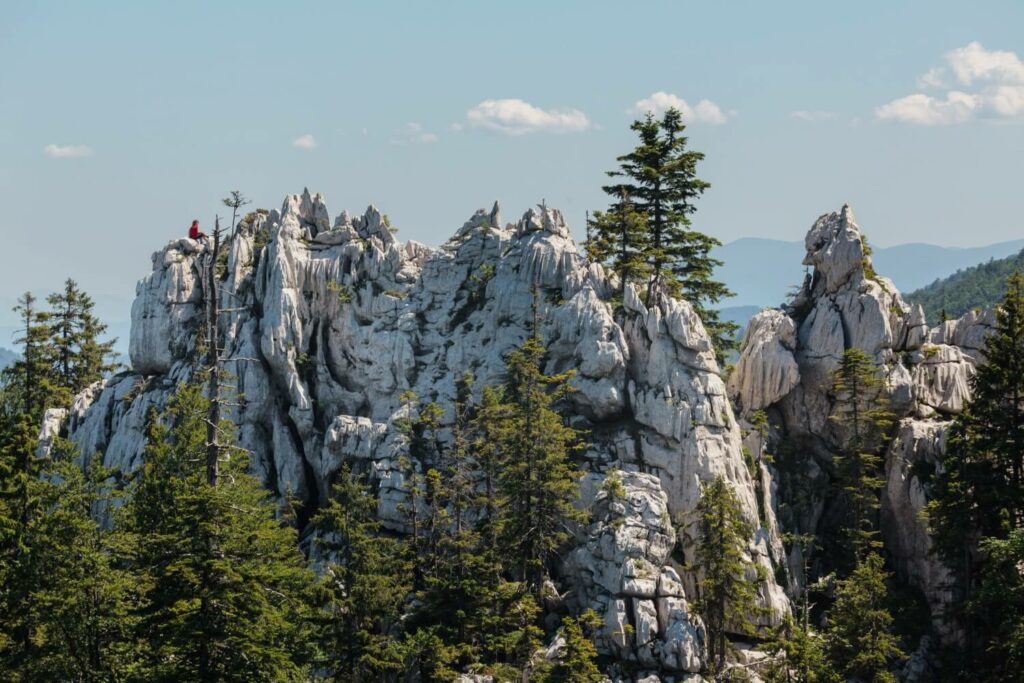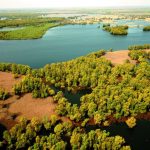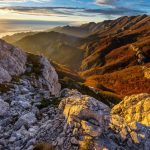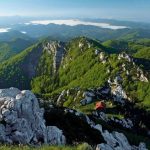Secluded for millennia, the mountains of North Velebit National Park challenge you to unlock their mystifying beauty.
- Welcome to North Velebit National Park Croatia!
- 5 things not to miss in Northern Velebit National Park
- Animals of Northern Velebit
- Hajdučki kukovi and Rožanski kukovi
- Where is North Velebit National Park? Map and Entrance
- North Velebit National Park weather
- Where to stay?
- How to get to North Velebit National Park
- Plan a safe hiking visit to North Velebit National Park
Welcome to North Velebit National Park Croatia!
Generally, it’s rare to find two National Parks within just one mountain range. But, then, the Velebit mountains are rather special. In fact, the whole mountain range is designated a Nature Park. As such, it’s inscribed on UNESCO’s list of World Heritage Sites. Within it lies both Paklenica National Park and North Velebit National Park.
Often called Northern Velebit National Park, this is a distinct and varied part of Velebit. Straddling two different climate regions, rare plants and animals live here. They make their homes in a landscape rich in forests, valleys, mountains, caves and supernatural-looking rock formations. Between these features, the well-trodden paths of walkers and hikers. Previously, they’ve visited to be astounded by the stunning natural phenomena here. Maybe you should be next?
5 things not to miss in Northern Velebit National Park
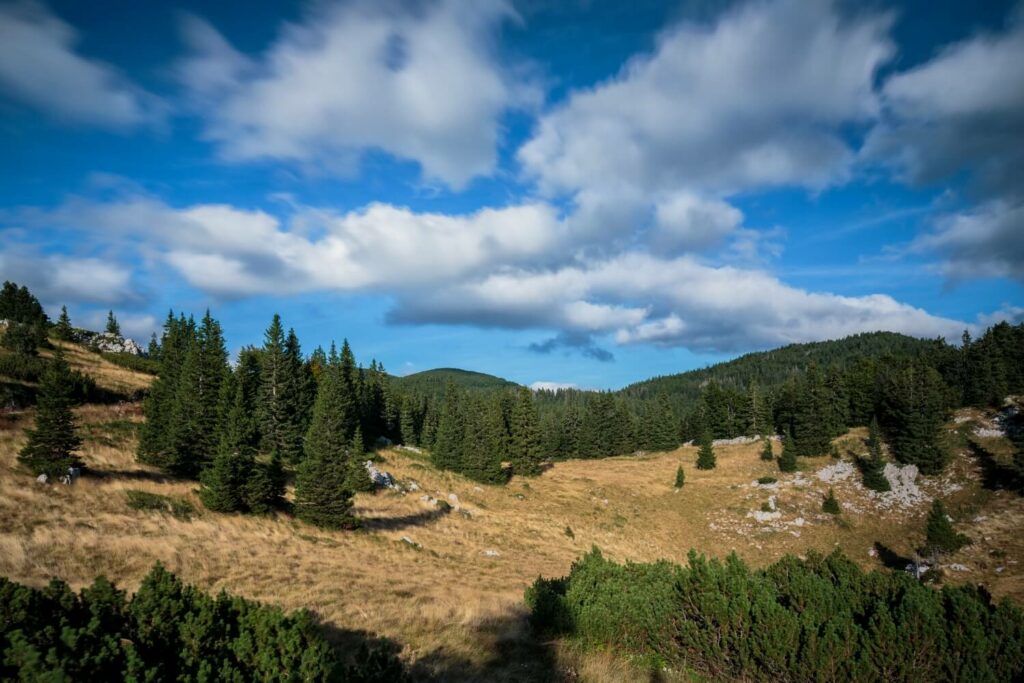
1) Mountain Hiking in Northern Velebit
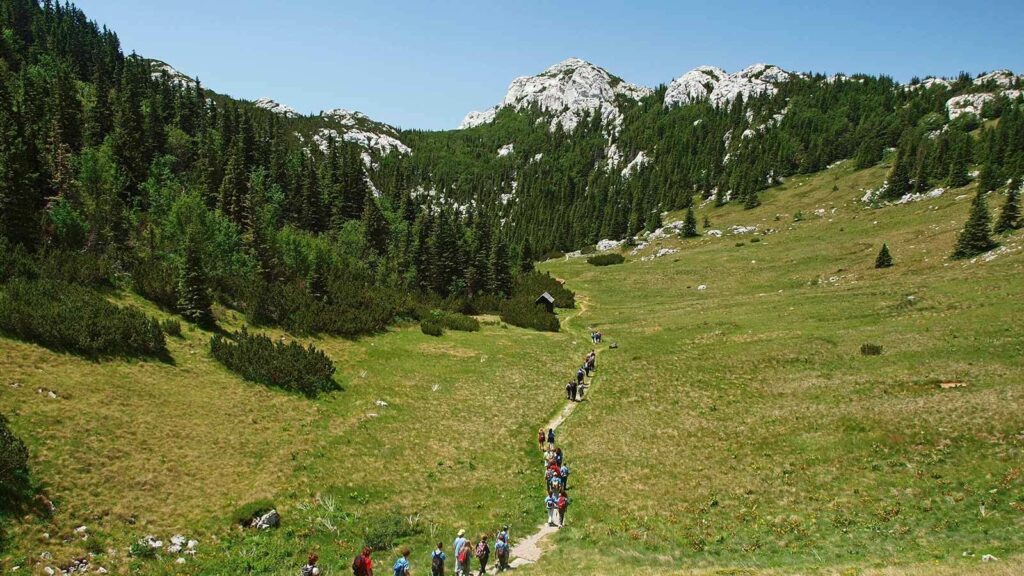
Over 30 hiking trails run through the wildly different landscapes of North Velebit National Park. Indeed, almost all of them lead you to different mountain peaks. If you want to check out recommended hiking routes of Northern Velebit, then look here.
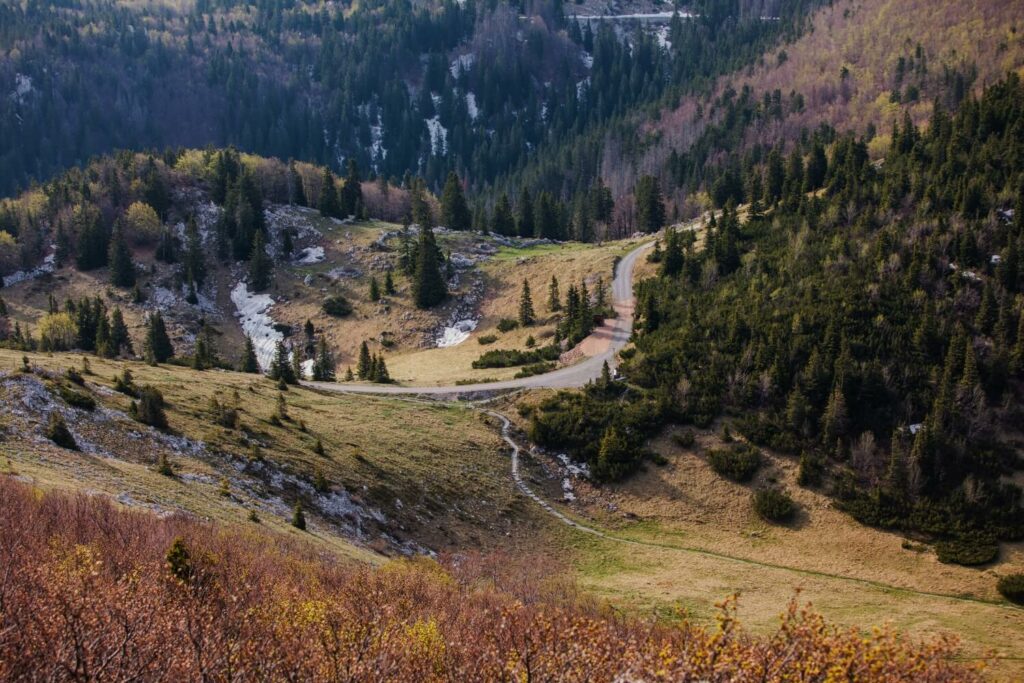
North Velebit National Park Hiking Trail Map
Park authorities recommend the Croatian Mountain Rescue Service map for orienteering in Paklenica National Park. If you want to check it out, then look here. Additionally, try out the Interactive hiking map of Croatia (developed by Croatian Mountaineering Federation) here.
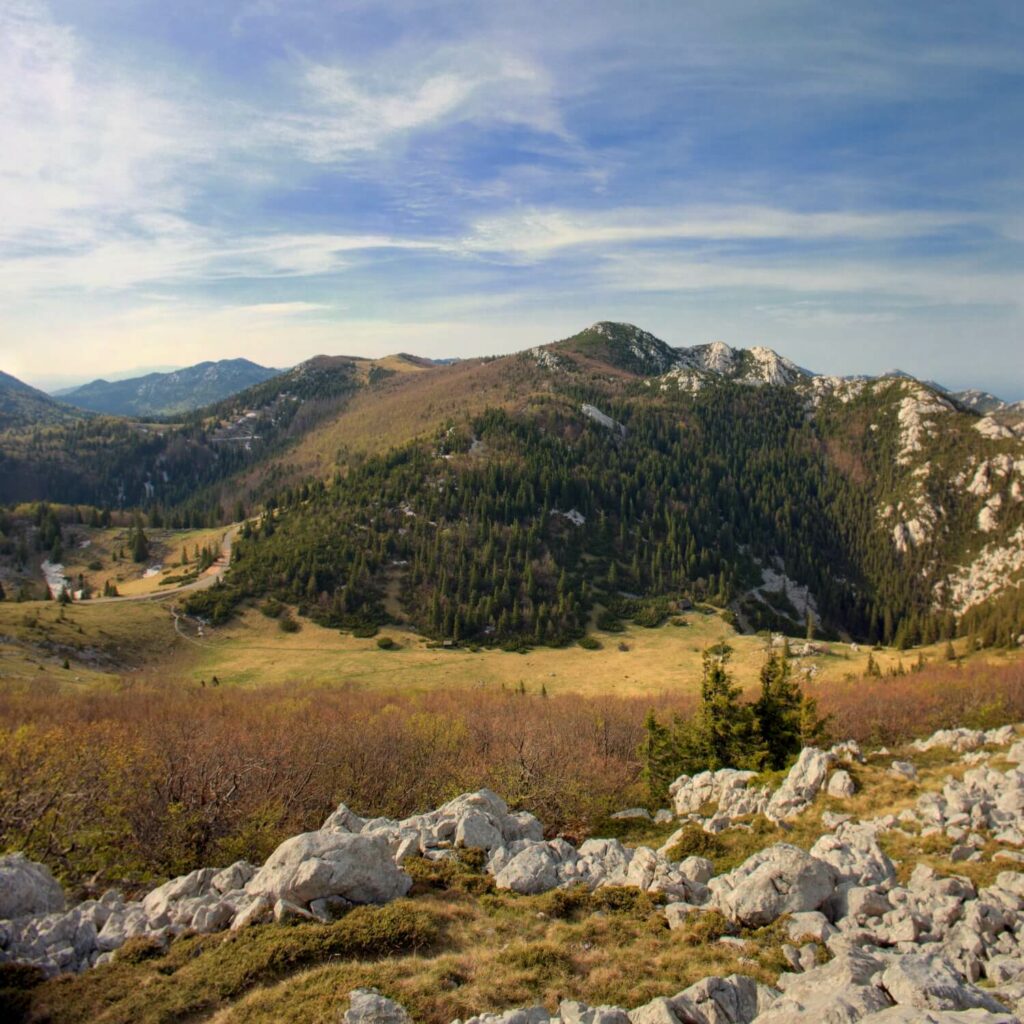
2) Velebit Botanical Garden
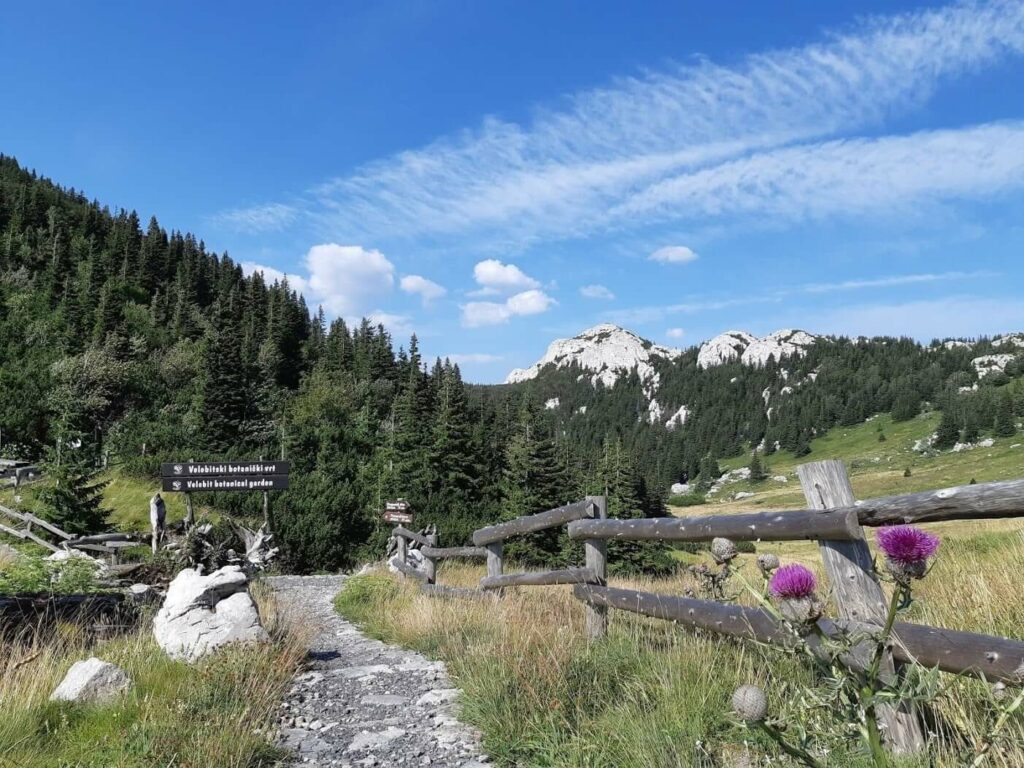
In the same area as Zavižan, you’ll find a fascinating microcosm of the Velebit mountains. Established in 1967, Velebit Botanical Garden collects and preserves the region’s wealth of plant life. Shortly after being established, the entire surrounding area was proclaimed a Special Botanical Reserve; Zavižan; Balinovac; Velika Kosa.
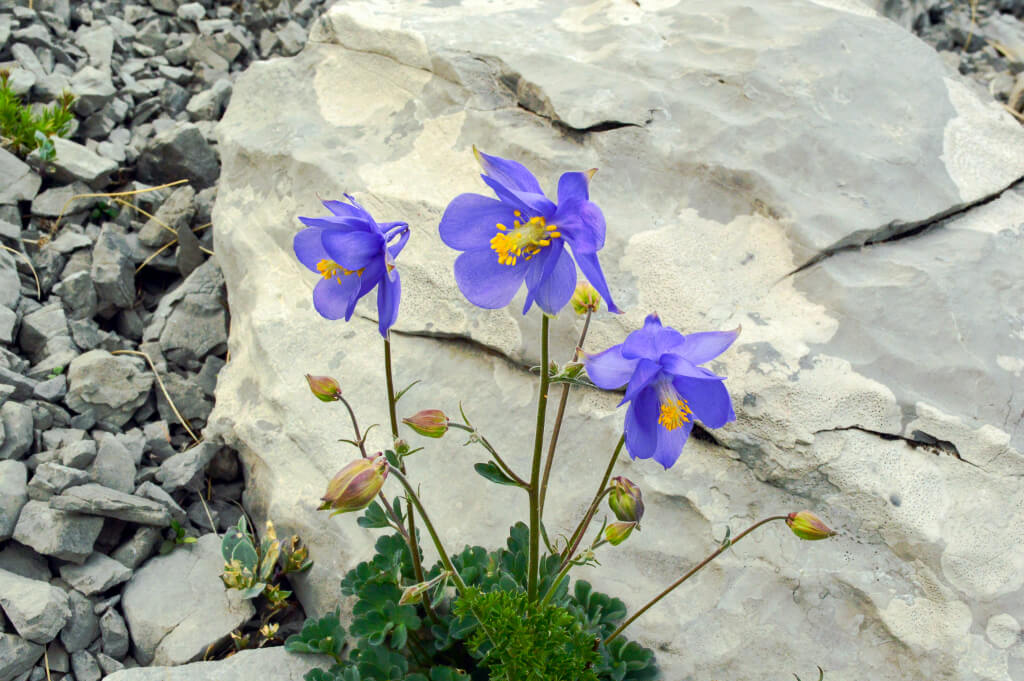
Today, you’ll find some 300 plant species in the Botanical Garden. Some grow wild, naturally, while others have been brought in from other areas of Velebit. Including some rare indigenous species; Velebit degenia (Degenia velebitica); Croatian sibirea (Sibirea altaiensis ssp. Croatica); Edelweis Leontopodium alpinum ssp. Krasense); Velebit pink (Dianthus velebiticus); Kitaibel’s primrose (Primula kitaibeliana); Kitaibel’s feather (Aquilegia kitaibelii); Croatian bittercress (Cardaminopsis croatica). Come and visit in July and July, when most of the plants are in blossom.
3) The epic views
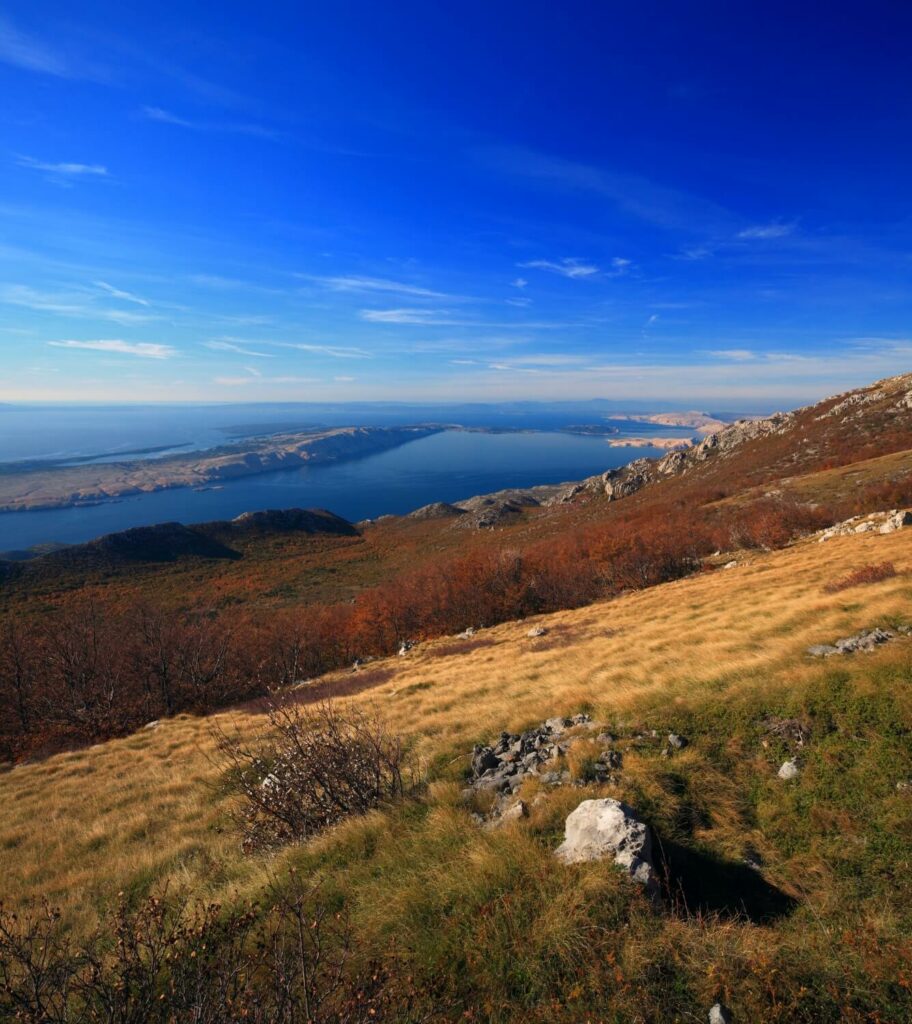
If you want brilliant views of the sea and islands, then you’ll get that in North Velebit. Simply head up to the Zavižan weather station, not far from the main entrance. You’ll find several easy walking trails from there to nearby peaks. Once you’ve found a viewpoint, you’ll be rewarded by a vista of the Croatian coast and the Kvarner islands. Unforgettable.
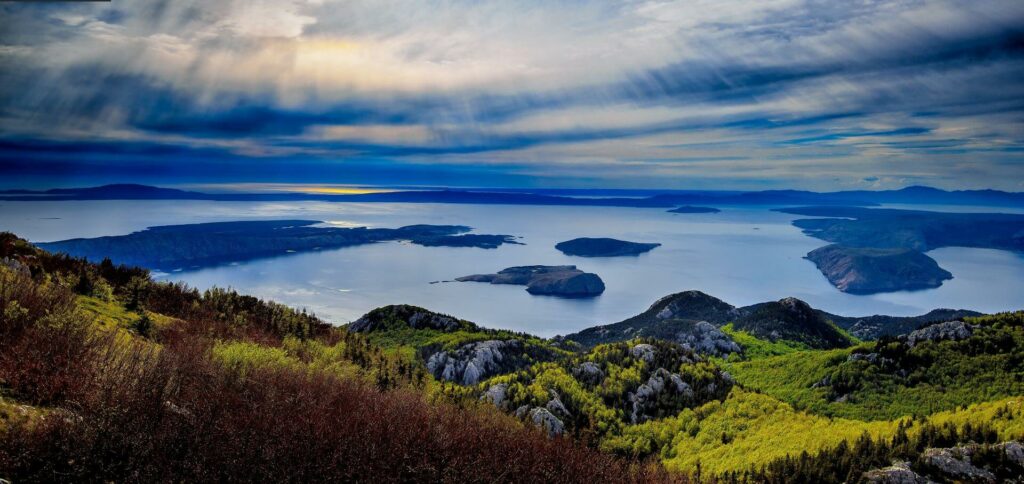
Alternatively, you’ll find the topography of continental Lika just as wondrous. Not only will you see wide panoramas, verdant valleys, and forests, but also many mystifying rock formations.
4) Cycling through Northern Velebit
If you thought the only way to see North Velebit was on foot, then you were wrong. Although, there are no dedicated cycling tracks within the National Park. However, you’ll find a network of public and forest roads that can show you many highlights. Furthermore, you’ll find a network of cycling tracks in the wider Velebit Nature Park. These link to the public and forest roads of North Velebit National Park. Subsequently, you shouldn’t miss North Velebit if you’re on a cycling tour of the region.
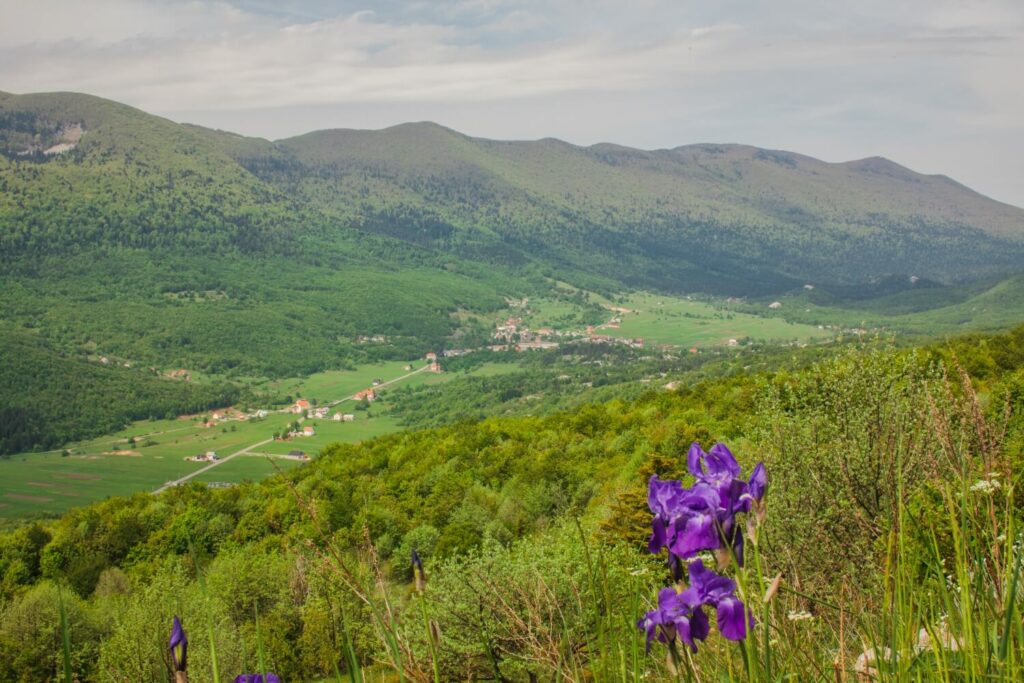
Suggested cycling routes of Northern Velebit National Park
- Krasno; Babić Sića; Zavižan; Veliki Lom; Krasno (43 km).
- Krasno; Babić Sića; Veliki Lom; Careva kuća; Veliki Lubenovac; Tudorevo; Alan; Mrkvište; Krasno (75 km).
- Štirovača; Mrkvište; Alan; Tudorevo; Veliki Lubenovac; Štirovača (33 km).
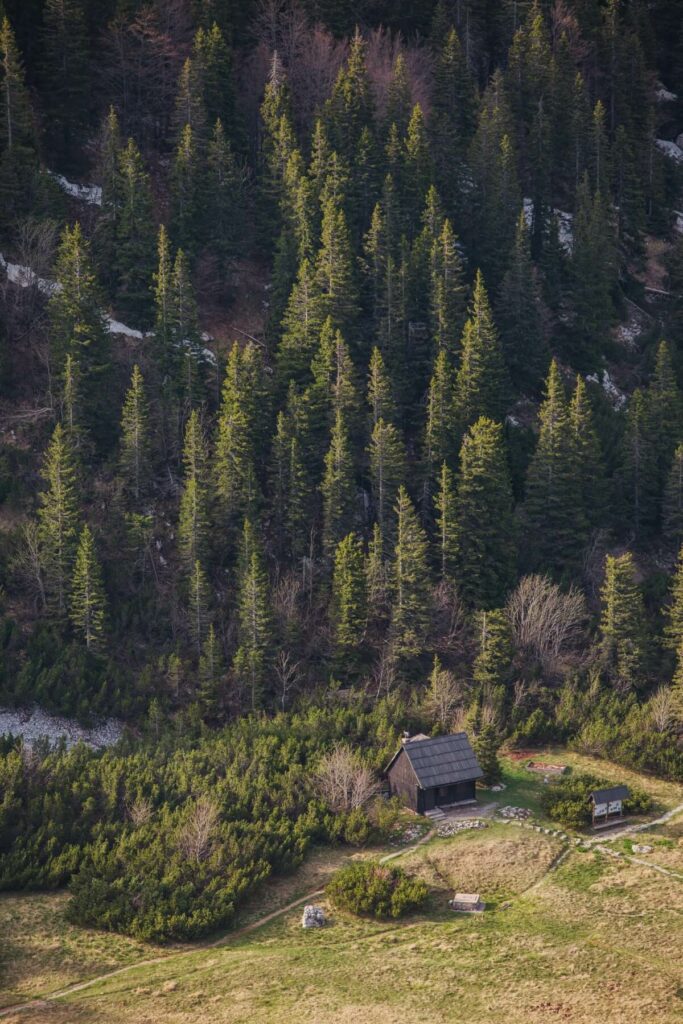
5) The singular Štirovača valley and forests
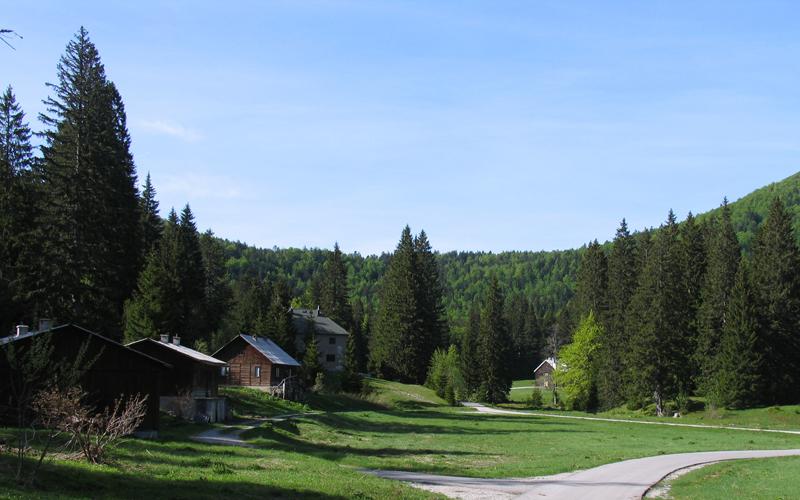
In the far southeast of Northern Velebit National Park – and beyond – you’ll find Štirovača. Lying at around 1100m above sea level, this is a beautiful, vast and verdant valley. In particular, it’s known for huge coniferous forests and the Klepina Duliba old-growth forest reserve. Due to the size of the valley, the topography here is very different from much of the park. Not only will you find a spring here, but also it’s the park’s sole source of drinking water. It feeds wet grasslands that surround and ponds, some man-made, essential to some inhabitants.
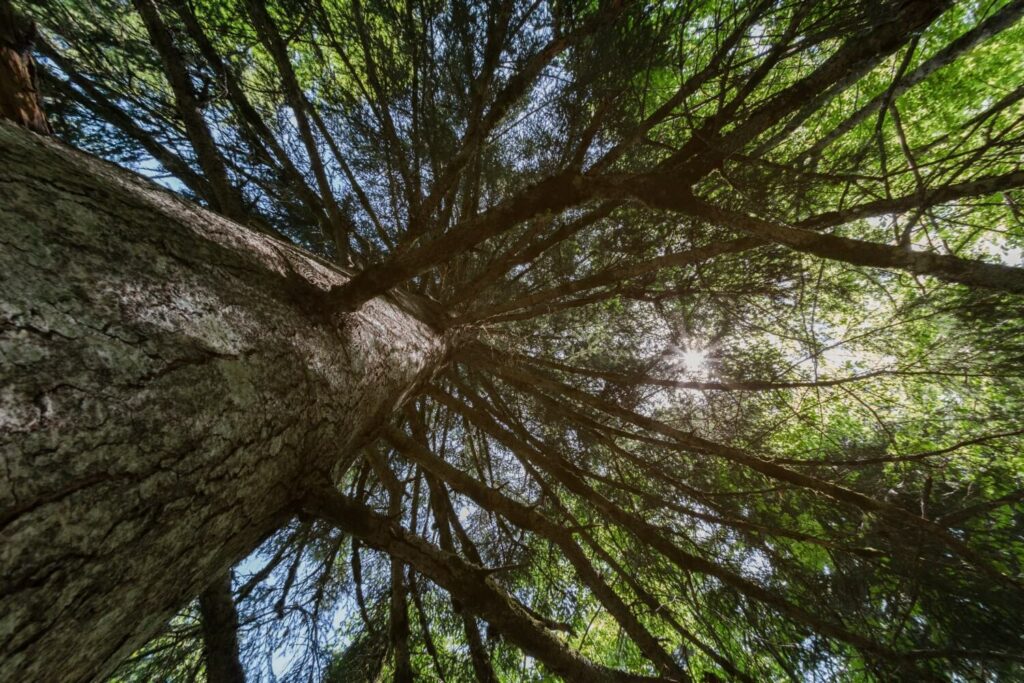
Animals of Northern Velebit
Both massive predators and minute cave species live in this remote part of Croatia. Here are just a few of them.
Butterflies
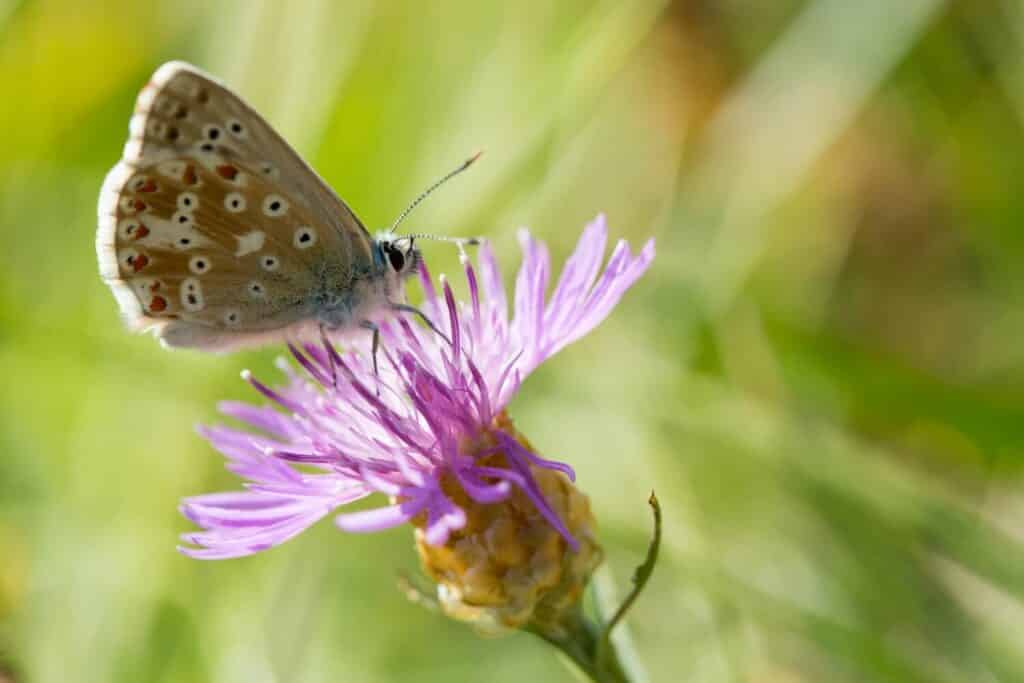
Up to the present time, over 70 species of butterfly have been identified in the park. Some of the most interesting species include Apollo; Clouded Apollo; Green-underside Blue; Chequered Blue Butterfly; Purple-edged Copper; Southern Festoon.
Reptiles
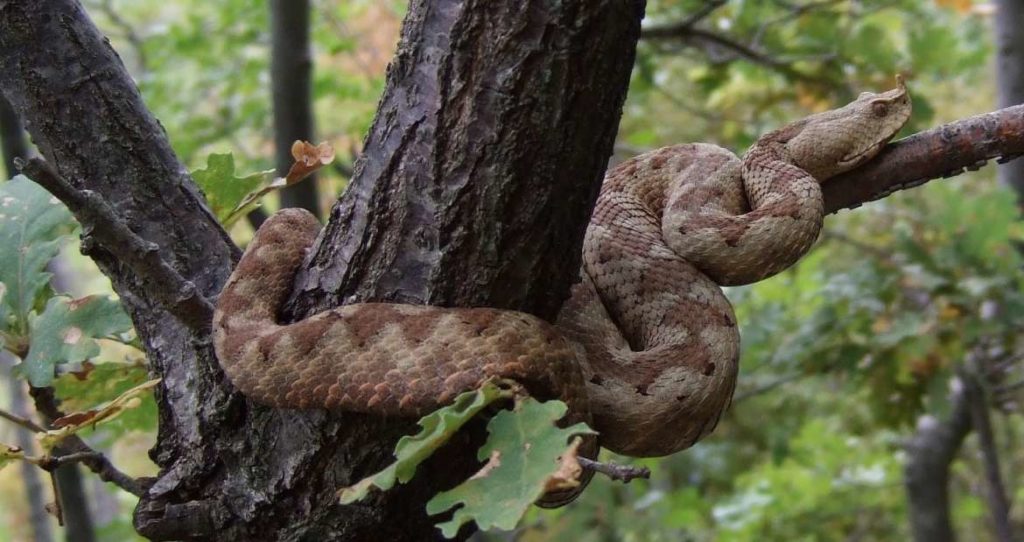
Until now, 16 species of reptiles have been identified in the park, the most common being lizards Slow Worm; Horvath’s Rock Lizard; Viviparous Lizard; Sand Lizard. Also, several snakes live here; Western Whip Snake; Aesculapian Snake; European Ratsnake; Horn-Nosed Viper (Vipera ammodytes).
Birds
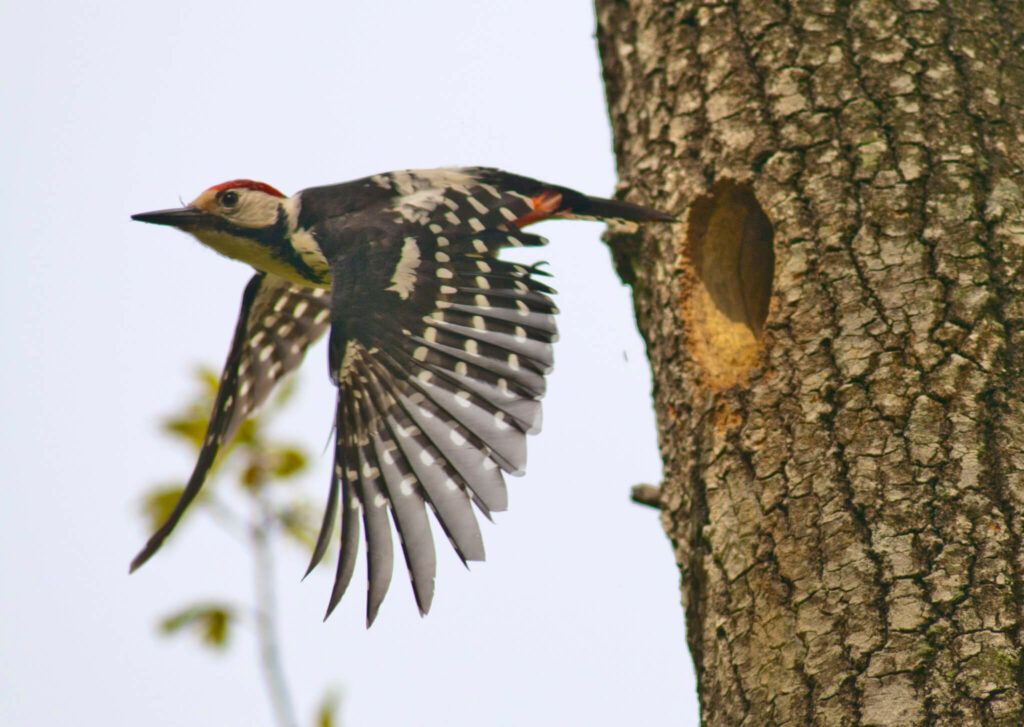
Up to the present time, over a hundred bird species have been identified as living or visiting the park. In detail, some of the rarest and most interesting include Eurasian Pygmy Owl; Tengmalm’s Owl; Eurasian Eagle Owl; Ural Owl; White-backed Woodpecker; Three-toed Woodpecker; Golden Eagle; European Honey Buzzard; Short-toed Eagle; Booted Eagle.
Mammals
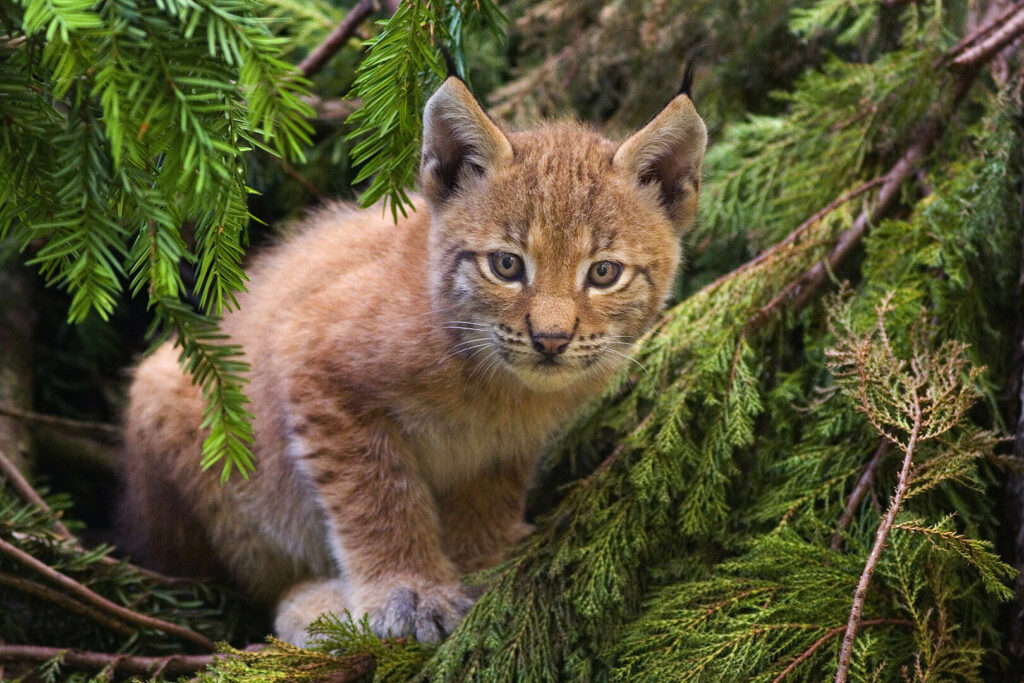
Up until now, 40 mammals have been found living or roaming through the parkland. Although they’re among the most common, you can’t deny the majesty of roe deer and red deer if you see them. Of the larger predators, Eurasian lynx, Grey wolf and Brown bear are among the rarest.
Hajdučki kukovi and Rožanski kukovi
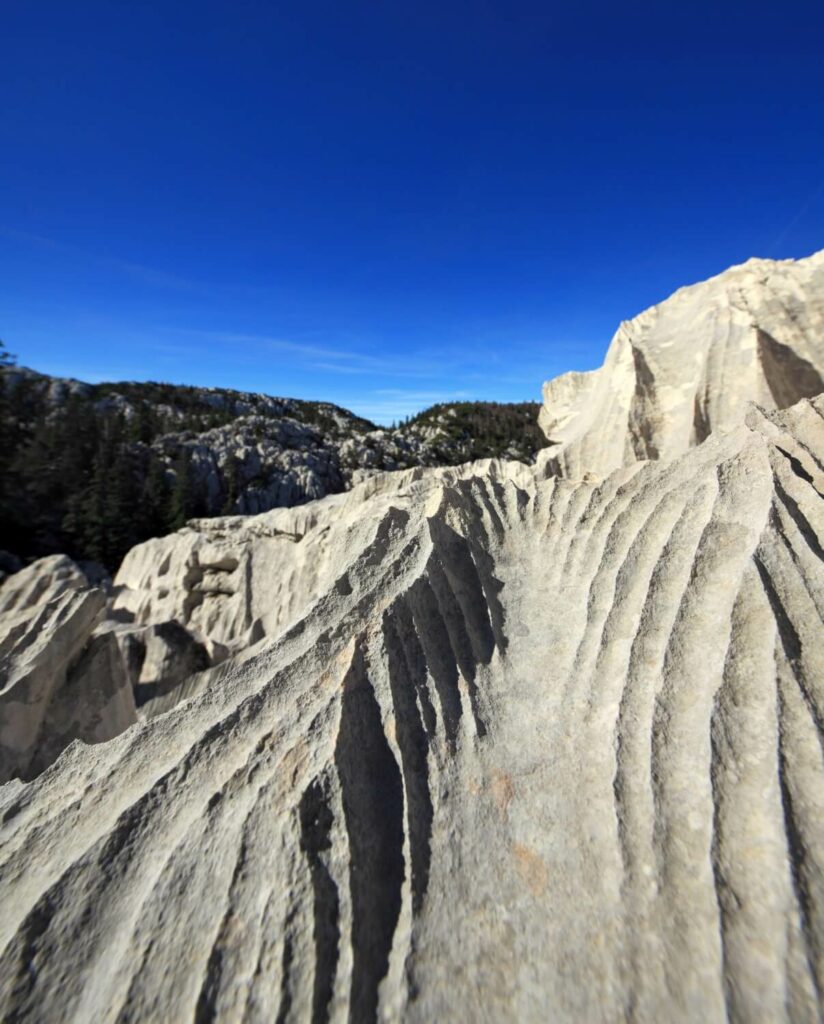
Within the park, you’ll find two areas designated as unique geological areas of interest. Specifically, Hajdučki kukovi and Rožanski kukovi. Both mystifying and beautiful, they together form an area of around 22 km2 containing 40 summits over 1600m. Between them, you’ll see Skrbina Draga and the Veliki Lubenovac field.
Rožanski kukovi
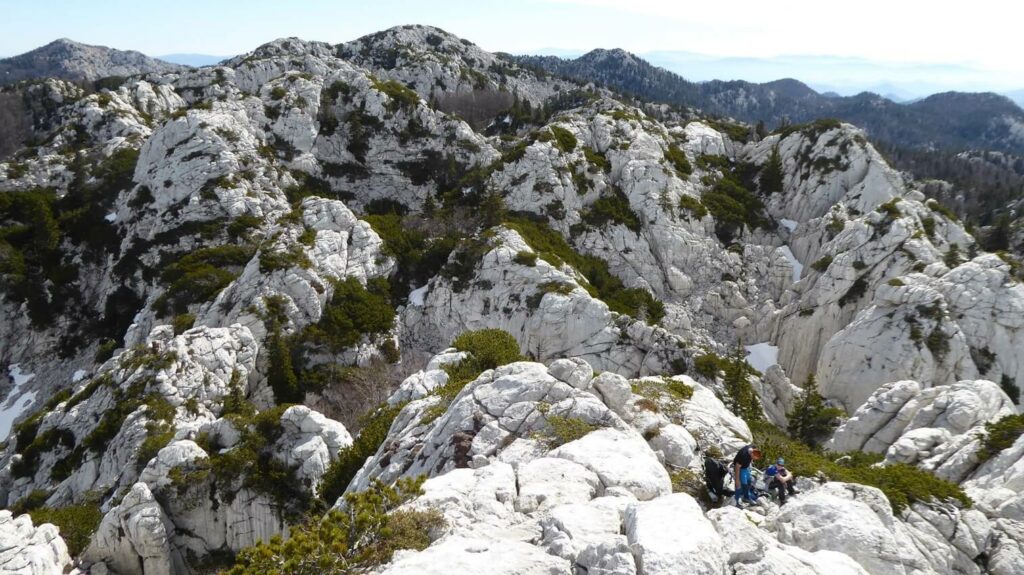
Both bizarre and sometimes otherworldly, in Rožanski kukovi chasms, spires and caves of karst collide. In an area of about 18 km2, you’ll here find more than fifty stony peaks, all over 1600m. If you want to see the highlights, then look out for Novotnijev kuk, Rossilijev kuk and Premužićev kuk.
Hajdučki kukovi
Both wild terrain and a complex underground drainage system mark Hajdučki kukovi. What’s more, you’ll here find Lukina jama, the deepest mountain cave in Croatia and one of the deepest in southeast Europe. It boasts a depth of -1431 meters and is named after Ozren Lukić, the local caving enthusiast who discovered it in 1992.
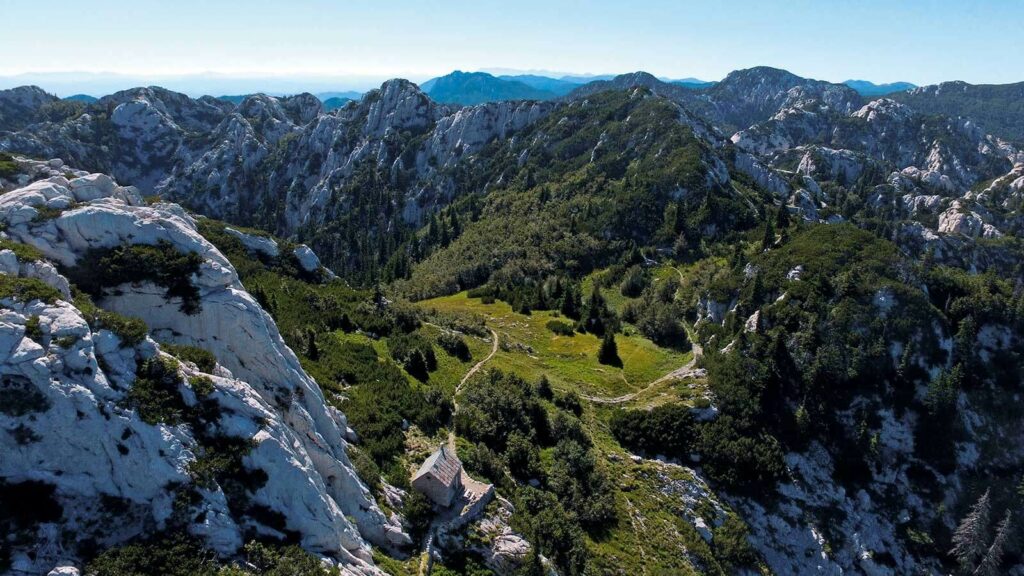
Where is North Velebit National Park? Map and Entrance
Certainly, as its name suggests, you’ll find Northern Velebit National Park in the north of the Velebit mountain range. Specifically, it’s a 109 km2 area of Croatia’s largest mountain range and is located in Lika-Senj County. In fact, all of Velebit is a Nature Park. However, two sections of the Velebit mountains have greater protected status as national Parks. Namely, North Velebit National Park and, further south, Paklenica National Park.
Entrances
Main entrance: Babić Siča
Northern Velebit National Park as an authority is based in the village of Krasno. Furthermore, it’s from this village that you access the route to the park’s main entrance, Babić Siča. Both the village and the main entrance are located at the very north of the park. If you want to visit the Zavižan mountain peak, then this is the entrance to use. Both the Zavižan valley and Velebit Botanical Garden lie beneath this peak and you access those using the same park entrance. You can get to Babić Siča from the direction of Oltari using a 10km slightly ascending paved road. Alternatively, travel from Krasno via the hamlet of Vukelići, driving 5km by dirt road. GPS coordinates for the main entrance are 44.8141° N, 14.9784° E.
Entrance to the south of the park
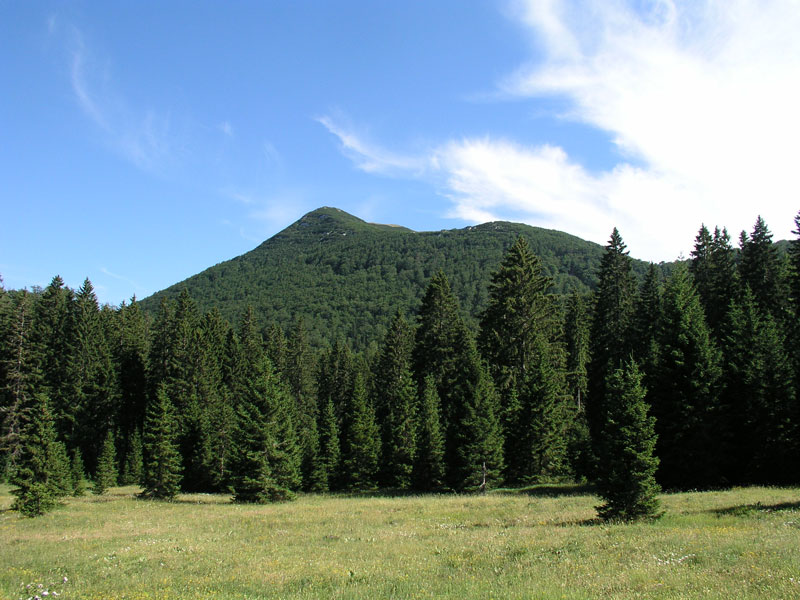
If you’re visiting features in the south of the park, then there are different ways you can enter. Both the Štirovača forest Nature Preserve and the Mountain Hut Alan are in the area of the park’s southern section. Štirovača is a 29 km drive from Krasno. If visiting Alan, then turn west, towards the sea, 3 km before the descent to Štirovača valley (in the direction of Jablanac). From here, a 9 km unpaved road takes you to Mountain Hut Alan.
Additionally, you can reach Alan from the Adriatic Highway above Jablanac by a 17 km road. Also, you can get to Štirovača from the direction of Gospić via Pazarište by a forest road.
Price of tickets for entry to North Velebit National Park
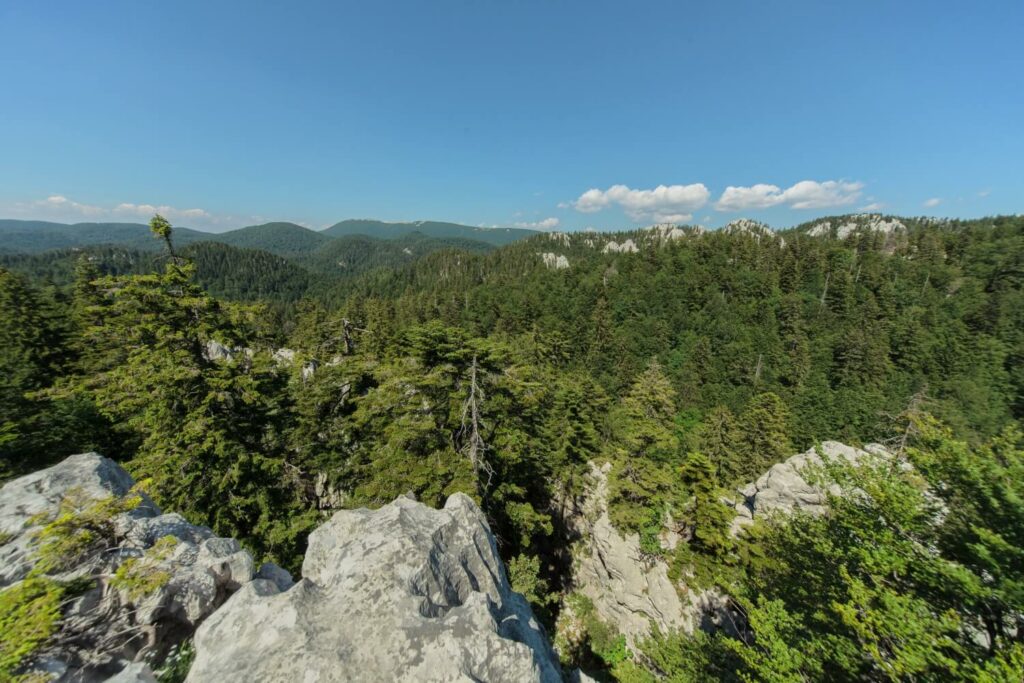
A standard ticket to enter North Velebit National Park costs 45 kuna. The ticket is valid for 3 full days exploration of the park. If you’re arriving in the park on foot or on a bicycle, then you’re eligible for a discount. Discounted tickets cost just 30 kuna. Both pensioners, and students, the disabled, and children under 14 are also eligible. Entry to the park for children under 6 is free. If you’re visiting the park in a group, then the price of ticket is 35 kuna per person. Also, you can buy tickets online, in advance, here.
North Velebit National Park weather
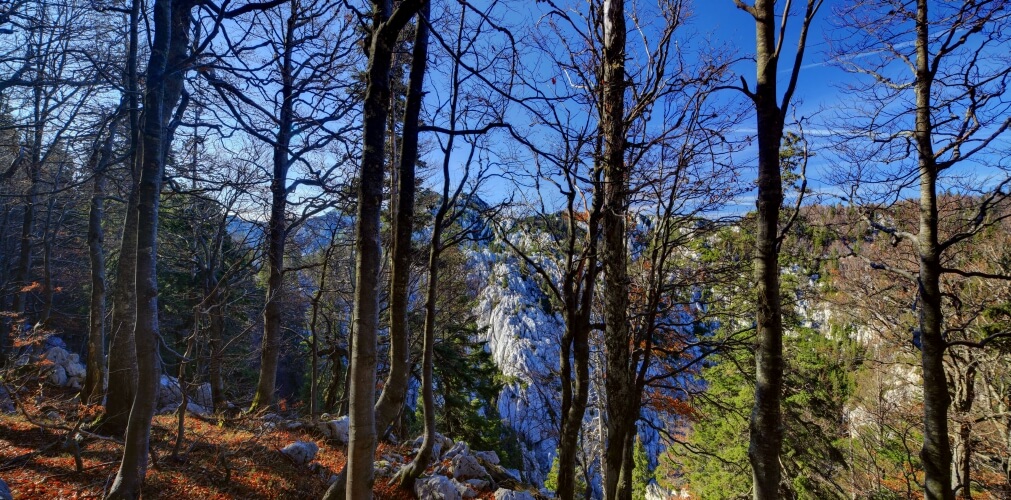
In Northern Velebit, the climate is warm and temperate. Although, as the surrounding greenery suggests, rainfall is significant. In fact, it rains here sometimes even in the driest months. The climate here is classified as Cfb by the Köppen-Geiger system. Average temperature in Gospić is 9.6 °C | 49.2 °F. About 1358 mm | 53.5 inch of rain falls annually. June, July, August and September have the warmest and most pleasant weather. Usually, you’ll find the coldest month being January. If you want to see the area today, then check out the forecast from nearby Gospić (below).
Where to stay
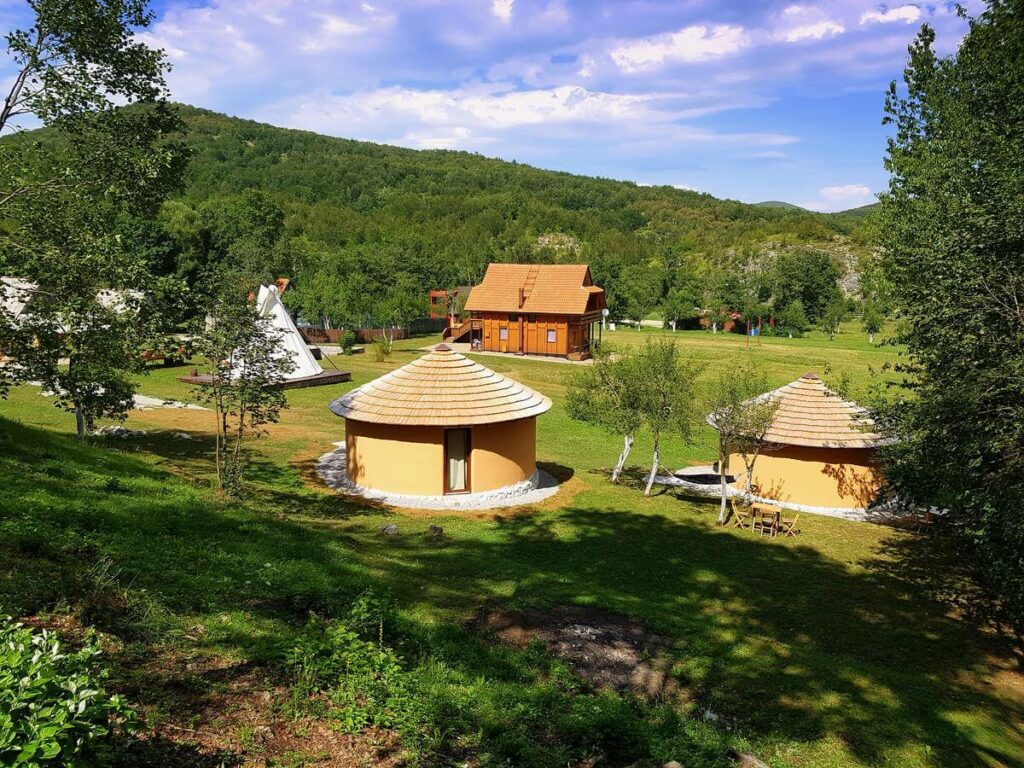
Because of the park’s size, accommodation options depend very much on your preference. Certainly, you can combine a visit to the park with a stay on the coast. Indeed, you’ll find good seaside accommodation in Jablanac, Lukovo, Sveti Juraj and Senj, all near the park’s north entrance.
However, if North Velebit National Park is central to visit, then chances are you love the mountains. You’re not alone. The interior of Lika-Senj County is very well adapted to guests like you. Accordingly, you’ll find great accommodation options in Krasno, Kuterevo and Otočac, all near the park’s north. In fact, at a distance of around 35km, Otočac is midway between two National Parks. Namely, North Velebit and Plitvice Lakes. Therefore, this whole interior region makes a great base for escaping into nature. You’ll find many more accommodation options on the road between Otočac and Plitvice.
(function(d, sc, u) {
var s = d.createElement(sc), p = d.getElementsByTagName(sc)[0];
s.type = ‘text/javascript’;
s.async = true;
s.src = u + ‘?v=’ + (+new Date());
p.parentNode.insertBefore(s,p);
})(document, ‘script’, ‘//aff.bstatic.com/static/affiliate_base/js/flexiproduct.js’);
If you want to stay near the south of the park, then again you have options. Look on the booking platform below. One highly rated choice near the south of the park is the luxury Linden Tree Retreat in Velika Plana.
Mountain Huts / Mountain Shelters in the park
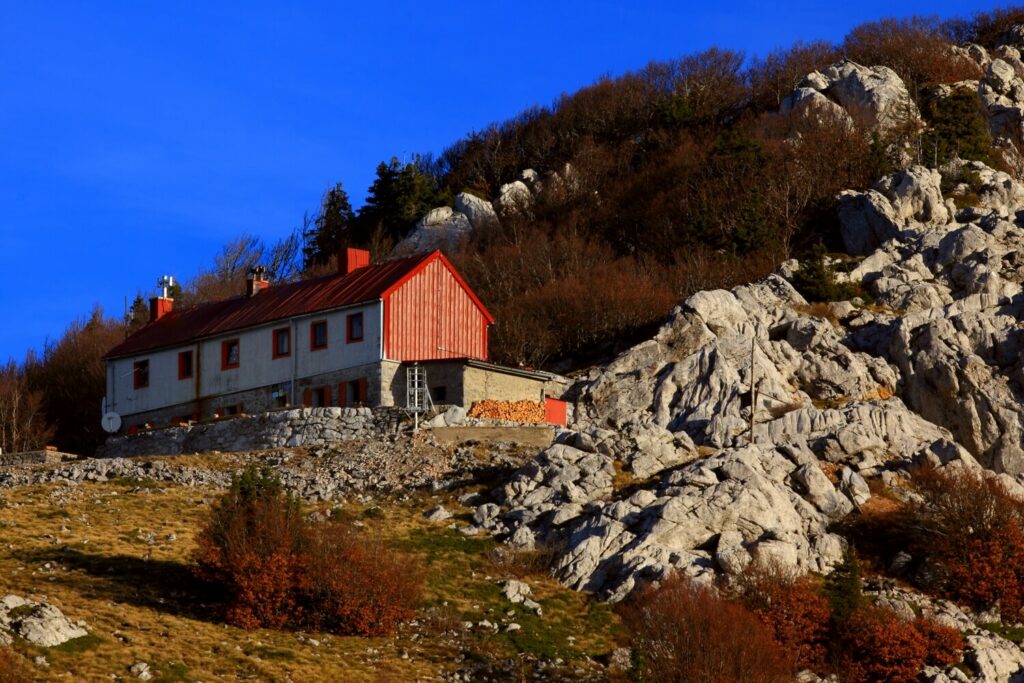
You’ll find several places to shelter and stay within the actual park. However, most of these are quite basic. Generally, they’re equipped for a single-night stay, maybe to break up a two-day hike. Certainly, you won’t find them suitable for longer stays. If you want to learn more about overnight stays within the park, then ask park authorities about; Shepherd’s hut Alan; Zavižan mountain hut; Alan mountain hut; Rossi’s shelter.
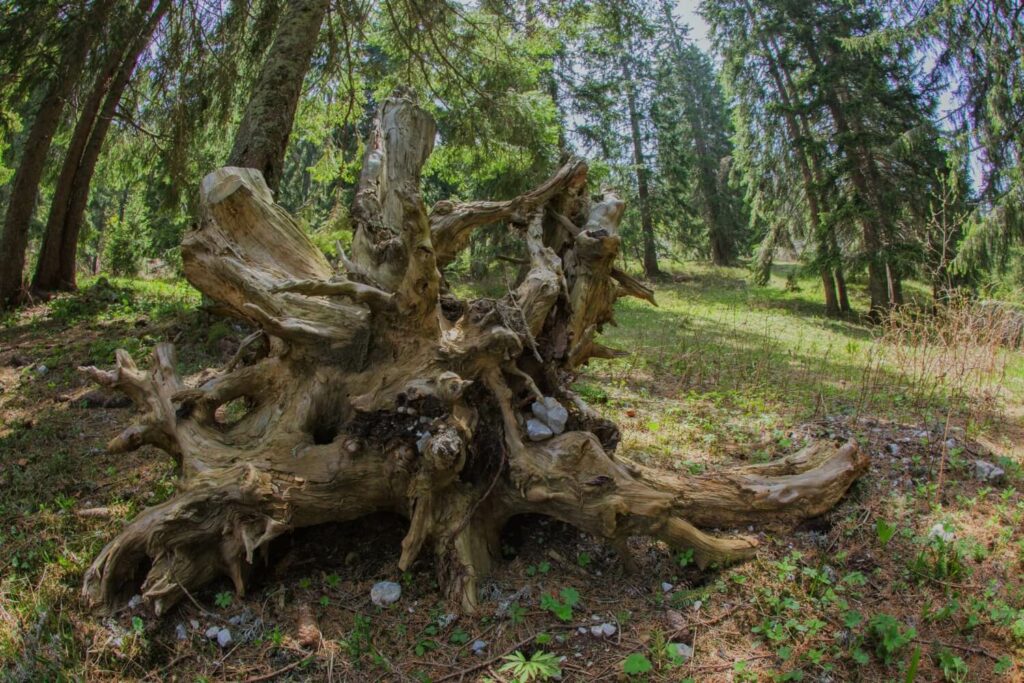
How to get to North Velebit National Park
Flights, nearest airport to North Velebit National Park

Such is the size of North Velebit National Park, the nearest airport depends on which side you want to enter. For instance, Štirovača forest, just to the park’s southeast, is 150km from Zadar airport. By comparison, the park’s north entrance is less than 100km from Rijeka airport. Certainly, you’ll find the park within striking distance of these both.
Road, by car
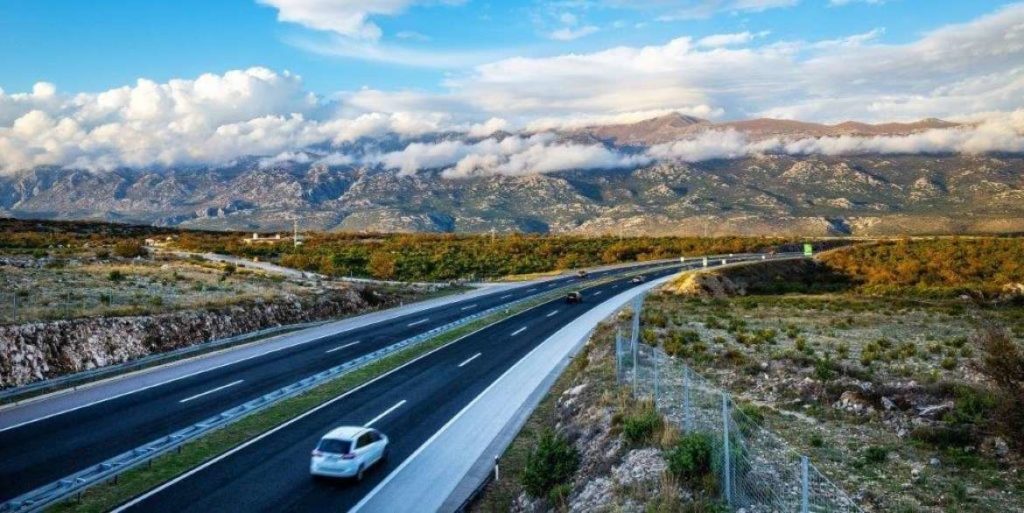
If you travelling from Rijeka, then take the D8 coastal road (Adriatic highway). Leave the road at Sveti Juraj, heading inland, following signs for the park. If you’re travelling from Zagreb, then take the A1 motorway in the direction of Rijeka. After passing through Karlovac, you’ll leave the direction of Rijeka at the Bosiljevo junction, staying on the A1. For around 80km you’ll travel the European route E71, following signs for Zadar. Leave the road at the Otočac junction, following signs for Švica, Krasno and North Velebit National Park.
Similarly, if travelling from Zadar to the northern entrance, take the E71 north, again leaving at Otočac. However, you’ll also find alternate routes into the park’s southern entrances. Both the Adriatic Highway and the D50 can lead you towards these, the latter via Gospić.
Looking for a fast, reliable and trouble-free transfer to or from North Velebit National Park? Contact TC transfer partner Adriatic Transfers for your one-stop solution.
Plan a safe hiking visit to North Velebit National Park
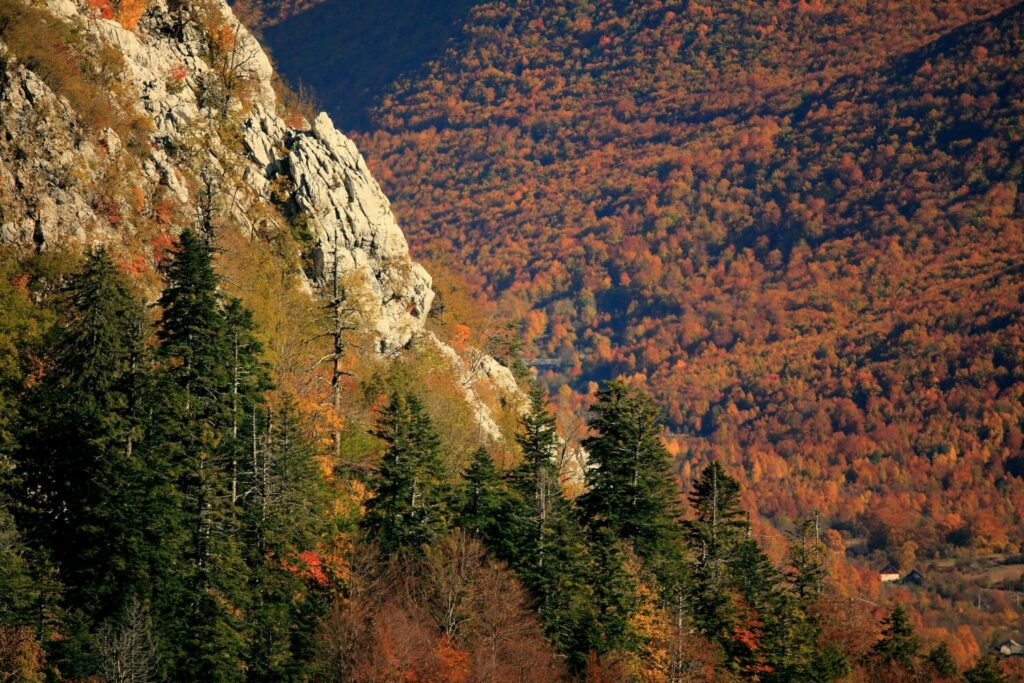
If you’re going hiking in North Velebit National Park, then plan your route before you set off. Tell someone outside your hiking party about the route you plan to take. In fact, it’s a good idea to leave a map of your route at your lodgings. Make sure you have appropriate footwear. Specifically, trainers and sandals are not appropriate for tackling mountain areas. Wear boots for strenuous hikes, even in summer. And, make sure you check the weather forecast.
Regardless of how long you plan to be in the park, take enough fresh drinking water. Equally important, once you’ve finished, please don’t leave any empty plastic bottles behind. Additionally, take fully charged mobile phones.
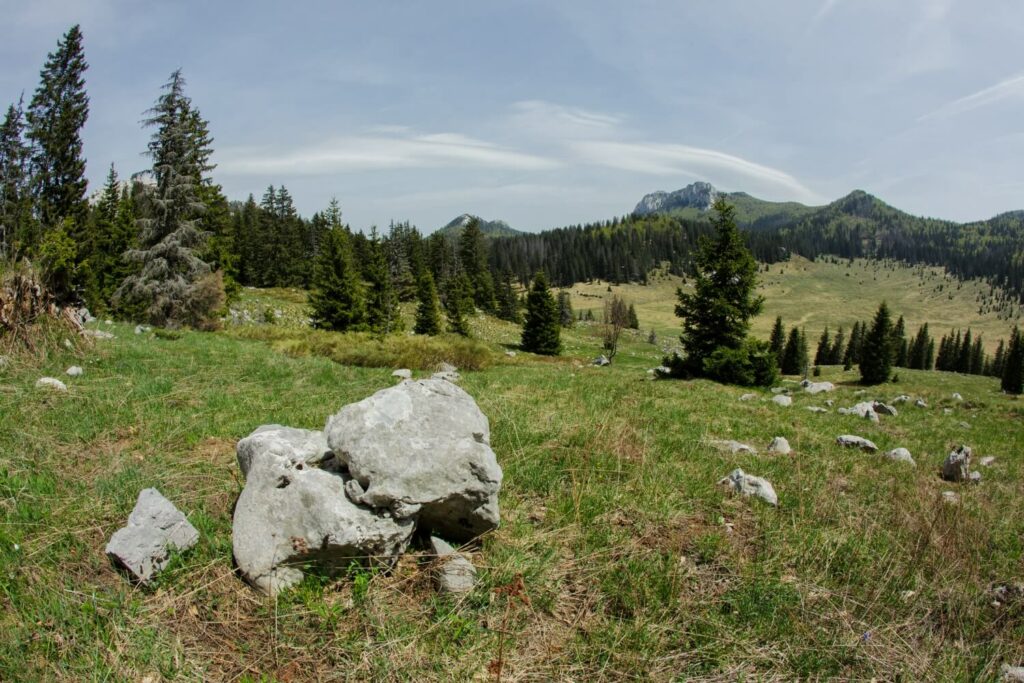
Emergency help
If you get into trouble on the mountains, then call emergency services at the earliest opportunity. The emergency phone number for Croatia is 112. Read all you need to know about emergency services in Croatia here.
More information
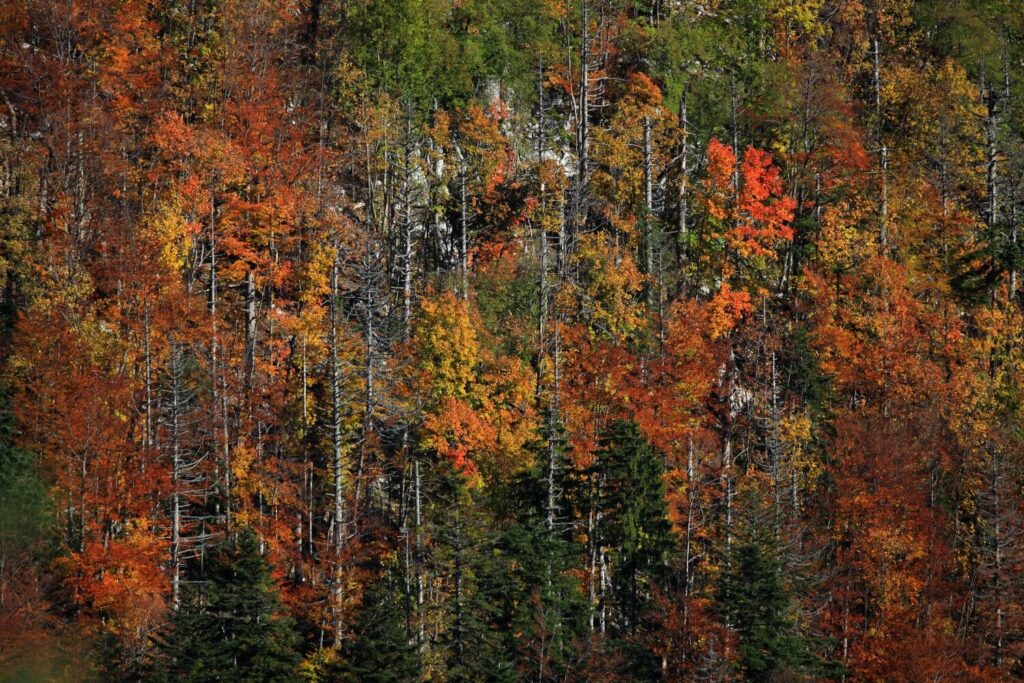
North Velebit National Park
Address: Krasno 96, 53274 Krasno, Lika-Senj County, Croatia
Email: npsv@np-sjeverni-velebit.hr
Telephone: +385 (0) 53 665 380
Website: np-sjeverni-velebit.hr/www/en/
Facebook: facebook.com/sjevernivelebit
Lika-Senj County Tourist Board
Address: Budačka 12, Gospić, Lika-Senj County, Croatia
Email: info@visit-lika.com
Telephone: +385 (0) 53 574 687
Website: visit-lika.com/en
Facebook: facebook.com/visitlikaregion

